Anqi Liang
ICAR: Image-based Complementary Auto Reasoning
Aug 17, 2023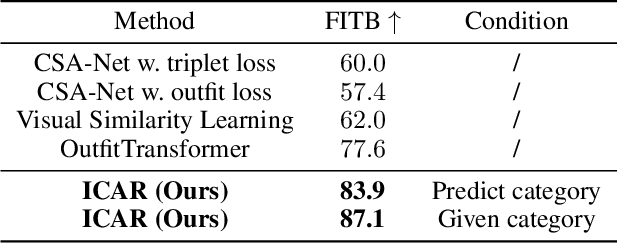
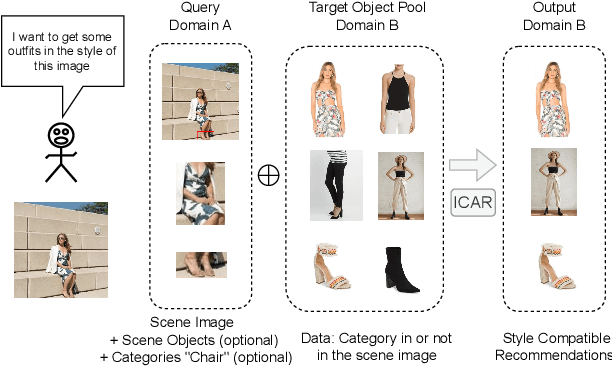
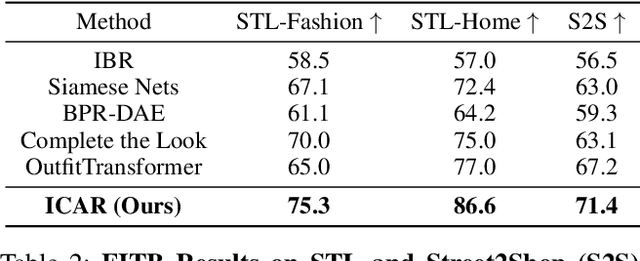

Abstract:Scene-aware Complementary Item Retrieval (CIR) is a challenging task which requires to generate a set of compatible items across domains. Due to the subjectivity, it is difficult to set up a rigorous standard for both data collection and learning objectives. To address this challenging task, we propose a visual compatibility concept, composed of similarity (resembling in color, geometry, texture, and etc.) and complementarity (different items like table vs chair completing a group). Based on this notion, we propose a compatibility learning framework, a category-aware Flexible Bidirectional Transformer (FBT), for visual "scene-based set compatibility reasoning" with the cross-domain visual similarity input and auto-regressive complementary item generation. We introduce a "Flexible Bidirectional Transformer (FBT)" consisting of an encoder with flexible masking, a category prediction arm, and an auto-regressive visual embedding prediction arm. And the inputs for FBT are cross-domain visual similarity invariant embeddings, making this framework quite generalizable. Furthermore, our proposed FBT model learns the inter-object compatibility from a large set of scene images in a self-supervised way. Compared with the SOTA methods, this approach achieves up to 5.3% and 9.6% in FITB score and 22.3% and 31.8% SFID improvement on fashion and furniture, respectively.
CA$^2$T-Net: Category-Agnostic 3D Articulation Transfer from Single Image
Jan 05, 2023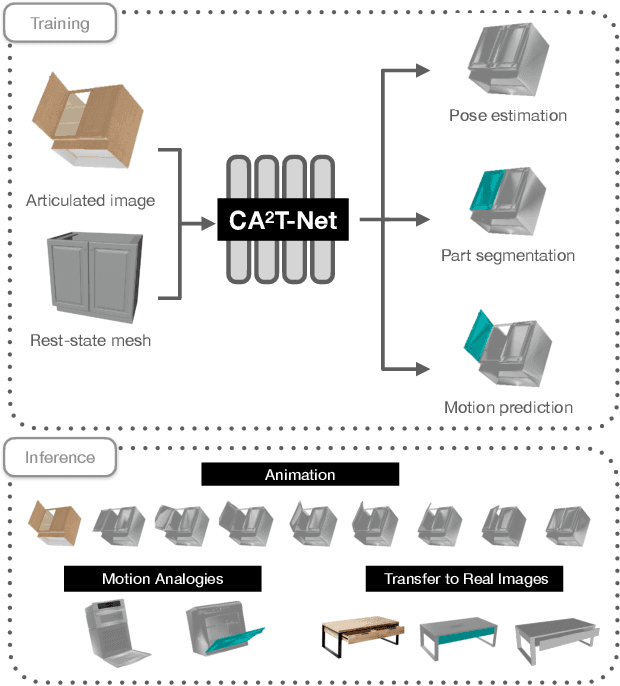

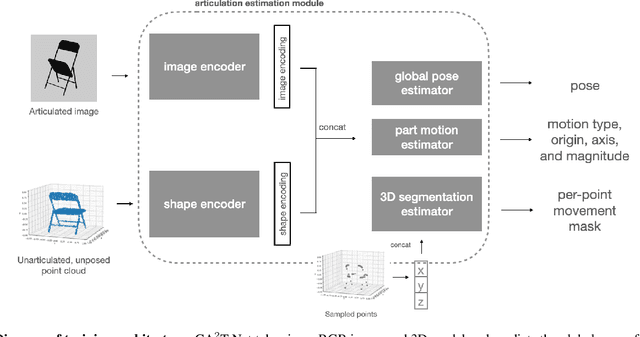

Abstract:We present a neural network approach to transfer the motion from a single image of an articulated object to a rest-state (i.e., unarticulated) 3D model. Our network learns to predict the object's pose, part segmentation, and corresponding motion parameters to reproduce the articulation shown in the input image. The network is composed of three distinct branches that take a shared joint image-shape embedding and is trained end-to-end. Unlike previous methods, our approach is independent of the topology of the object and can work with objects from arbitrary categories. Our method, trained with only synthetic data, can be used to automatically animate a mesh, infer motion from real images, and transfer articulation to functionally similar but geometrically distinct 3D models at test time.
 Add to Chrome
Add to Chrome Add to Firefox
Add to Firefox Add to Edge
Add to Edge